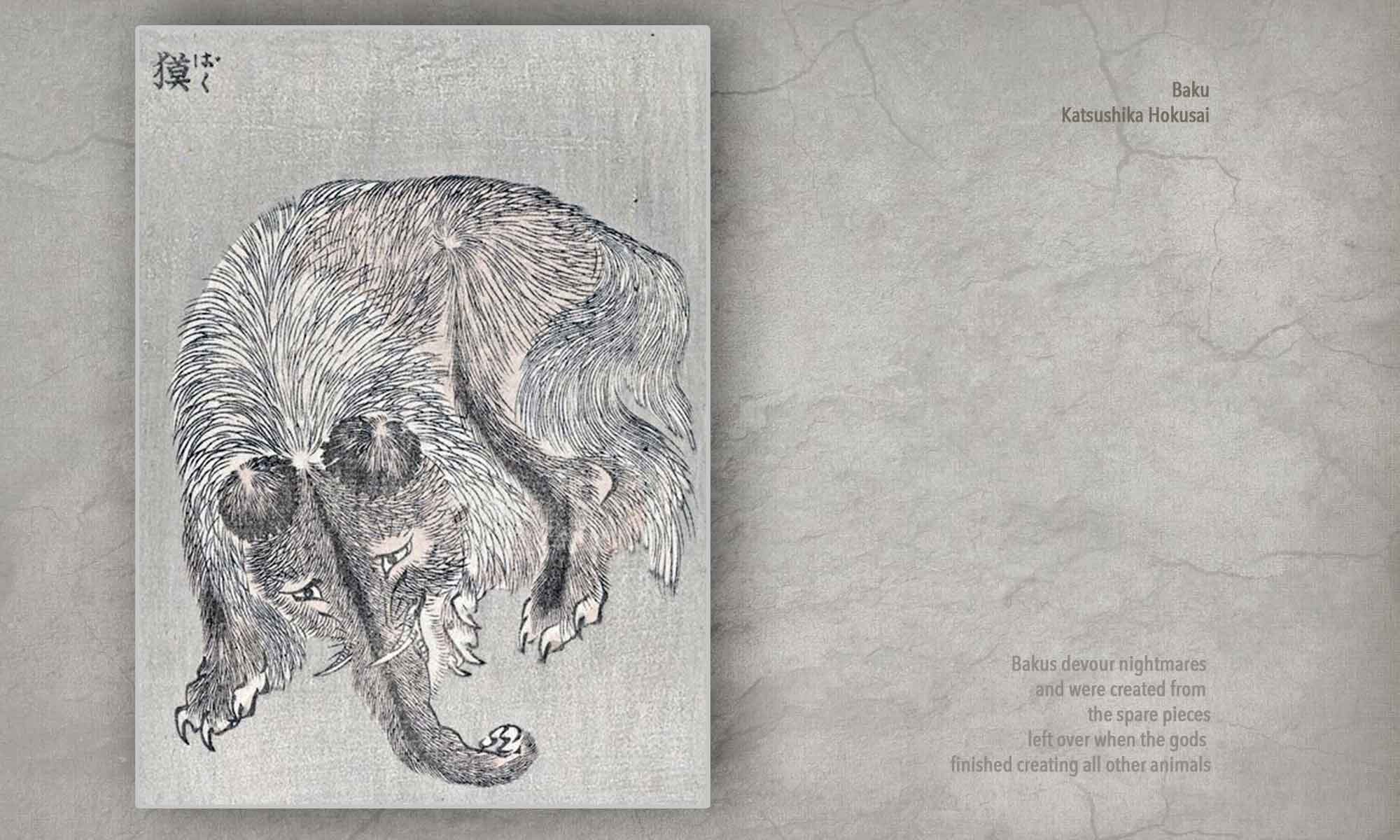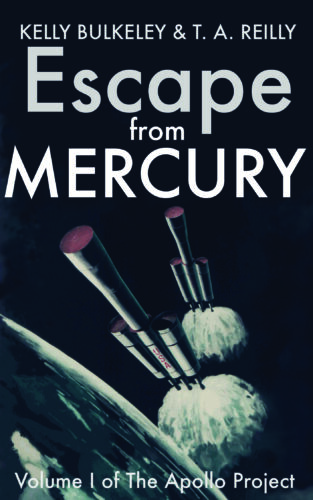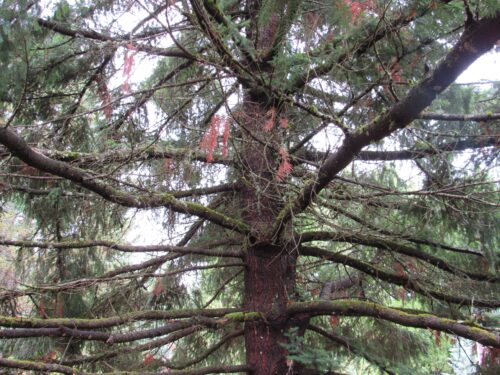 The day before the opening game of the Trailblazers’ 2021-2022 season, I was bothered by something I read online about Damien Lillard, Portland’s best player. The article ranked him lower among the league’s top players than I think he deserves; it dinged him for his defense, and emphasized the catastrophe that would befall the Blazers should he ever leave. The tone of the article reflected the very low expectations people seem to have for Portland’s performance this season. The Blazers hired a new head coach, Chauncey Billups, who has never held that role before, but whose previous assistant coaching focused on defense, and that’s where the Blazers most needed to improve (tied for 3rd best team in the league in offensive efficiency last year, but 19th in the league in defensive efficiency). Otherwise, Portland made no big roster moves during the off-season. They let Carmelo Anthony go, which I thought was too bad, he had a great run with the Blazers the past couple years. They re-signed their big mid-season acquisition from last year, shooting guard Norman Powell, which is certainly good. They added several new players to the bench, including two big guys who play great defense, Cody Zeller and Larry Nance, Jr.
The day before the opening game of the Trailblazers’ 2021-2022 season, I was bothered by something I read online about Damien Lillard, Portland’s best player. The article ranked him lower among the league’s top players than I think he deserves; it dinged him for his defense, and emphasized the catastrophe that would befall the Blazers should he ever leave. The tone of the article reflected the very low expectations people seem to have for Portland’s performance this season. The Blazers hired a new head coach, Chauncey Billups, who has never held that role before, but whose previous assistant coaching focused on defense, and that’s where the Blazers most needed to improve (tied for 3rd best team in the league in offensive efficiency last year, but 19th in the league in defensive efficiency). Otherwise, Portland made no big roster moves during the off-season. They let Carmelo Anthony go, which I thought was too bad, he had a great run with the Blazers the past couple years. They re-signed their big mid-season acquisition from last year, shooting guard Norman Powell, which is certainly good. They added several new players to the bench, including two big guys who play great defense, Cody Zeller and Larry Nance, Jr.
What’s not to like? The fear is that it doesn’t add up to enough in an NBA that gets faster and more skilled every year. Yes, Damien and C.J. McCollum will score points. But will the rest of the team be able to perform at championship-levels of competition? Nothing that happens in the preseason should cause too much anxiety, but losing all four games didn’t help in calming the worrisome vibes as the first game approached.
The Sacramento Kings were the visiting team. Led by veteran Harrison Barnes, they have lots of quick, young, talented players who clearly want to change their reputation as one of the league’s weakest teams. They certainly succeeded in gaining new respect from the Blazers, who lost in a very dispiriting fashion, 124-121. Portland played terribly for the first three quarters, made a comeback in the fourth, then fell short as Damien missed a last-second 3-point shot. For the game, Damien missed all nine of his 3-point attempts. Ouch. The team had no chemistry, and looked slow and out of tempo. The defense was awful.
Prospects of a truly disastrous season suddenly loomed. What if the Blazers had suddenly dropped into the lower ranks of the league? What would that mean for Damien and C.J., who have been the subject of trade talk throughout the off-season? Watching a franchise go through a sudden decline is a very, very painful experience for a fan…
That night after the game, I had this dream:
Will Damien Be Distracted?
Damien Lillard goes onto the basketball court with a gift someone gave him, a white rectangular box with a few things in it….He is happy, but I am confused….Won’t this distract him from the game?….
(10/21/21)
The dream made me think back to the opening ceremony before the game started, when Damien stepped to center court and spoke to the crowd. He welcomed everyone back to live action (yay!), and promised the team would try hard, even if the initial results might not be pretty to watch (hmm). The announcer thanked him as “Dame D.O.L.L.A.,” his musical pseudonym (double hmm). Now that I thought about it in light of the dream, it struck me at the time as a strange moment, breaking the fourth wall to reach out and lower our expectations, while gesturing towards his career beyond basketball. Damien is the not just the leader of the Blazers, but also the unquestioned athletic Alpha of the city, so it felt jarring somehow to hear him talk like this.
In the dream, I don’t know what’s in the box. It seems like a gift box for nice candles, or small jars of preserves, or little containers of grooming products. Whatever it is, it makes Damien happy. For nine seasons, a happy and confident Damien has led to a lot of Blazers success. What makes me worried about him now? His gifts. Literally and metaphorically, Damien Lillard is amazingly gifted. And that’s exactly what worries me. He has so many talents and future potentials, what if he isn’t totally committed to the Blazers anymore? What if he could do better as a musician than as a basketball player for Portland? It feels disrespectful to Damien even to think such a thought—so it comes out in a dream.
But one game does not a season make. No matter what’s going on with Damien, he’s not going to miss every 3-pointer he shoots. We could certainly hope for a better showing in the second game, even though it would be against a much better team, the Phoenix Suns. Led by rising star Devin Booker and all-time great Chris Paul, the Suns went all the way to the NBA Finals last year. If the Blazers were ever going to show a new level of defensive competence, now was the time to do so.
And lo and behold, an entirely different team showed up. The real team? Maybe. The Blazers overwhelmed the Suns, 134-105, and it could have been much worse. Booker did what he does, and scored 21. But the Blazers out-shot, out-rebounded, and out-hustled the Suns on both ends of the court. C.J. McCollum was hot and scored 28, while Damien had 19 points to go with 8 assists. Lots of bench guys got to play, and they looked great, too. Nassir Little and Anfernee Simons brought high energy and confident shooting, and Dennis Smith, Jr., had 5 assists in just 15 minutes of play. Ahh. What a wonderful exhale of a game.
That night after the game, I had this dream:
A Knife’s Edge
I am paying attention to a guy, his story, like in a book….A knife’s edge is threatening something of his….A round dark piece of fruit?….He is doing ok, though, overall….A couple, a man and woman, are sitting next to me on my right….But they just see the pages in the book, the images; they do not hear the story, and so they have no real idea what is going on….But I do….The guy in the story just has to keep moving forwards, that is all….
(10/23/21)
In the dream, the people to my right reminded me of the young couple sitting next to me at the game. They were in a happy party mood, friendly and chatty, shouting at the players by name, and getting high fives when they could. And yet… For most of the game they were fiddling with their phones, taking pictures, making videos, instagramming, etc., completely oblivious to the actual game in front of them.
To be clear, I have no problem with a fun date at the basketball game. Courtship at the court is an awesome thing and should be encouraged whenever possible. The dream doesn’t really seem to be about this couple or my feelings towards them. To be honest, the obnoxious man sitting to my left was much more annoying, so if this was a crowd-focused dream, I’d expect something from that direction. Instead, the dream revolves around the guy, his story, and the image of the knife and the round dark fruit. When I think of the dream in the light of the previous night’s game, the fruit immediately reminds me of an ad (for whiskey?) I saw on TV recently in which an artist spins an art-work basketball made of black shiny ceramic. That struck me as really cool and creative. And the guy in the dream with his story makes me think of each individual Blazers player, and what a big win like that means to them, how it opens up a new vista of confidence, reassurance, and possibility.
All of these basketball-related associations hover around the dream. Yet they shouldn’t distract from what Ernest Hartmann called the central image of a dream, in this case the piece of fruit and the knife. Sports aside, what other symbolic and metaphorical meanings can be connected to this specific, vivid image? Hmm. It could be seen as a vision of perilous sexuality, with the knife a phallic danger. It could be seen simply as part of preparing a piece of fruit to eat, and thus an image of impending nutrition. A knife and piece of fruit are common elements in classic paintings of “still life” scenes. Hmm.
The biological purpose of fruit is to bear seeds into a favorable growing environment, carrying the potential vitality of the plant into the future. Aha, there’s something that strikes a chord. The seed idea feels connected to the preseason-as-fertilizer metaphor from BDD #1, like an extension of nature-language to make sense of the basketball experience. In the dream, it felt like the fruit-like object needed to go forward with him, that’s the desired flowing growth of the story. But the knife is a threat; it could stop the flow (a player could be cut from the team?), and so it requires great caution in moving forwards (the Blazers’ weakest position?). The fruit is right next to the knife, right by its edge…
That seems to be the metaphor of the dream, or at least one of its metaphors: Playing on the knife’s edge. That’s what all the guys were doing last night. The story of the Blazers’ new season, the stories emerging for each player, the fate of their deepest seeds of potential, all entered last night’s game in a perilous and uncertain condition. Who is this team? How well can they perform? Do they have a future? By meeting this challenge with such a powerful and thoroughly entertaining performance, they put those questions to rest, at least for a night.
The couple in the seats next to me did not seem to share any of my concerns, but that’s fine, they clearly had a great time at the game, too. To be honest, they reminded me of Ronnie and Amber LaFontaine from “Modern Family.” I tried to be a really, really good neighbor.

 It’s more than a metaphor to say that Halloween is a time when our nightmares go on parade. The scary images, decorations, and costumes that take over the month of October have a direct psychological connection to the actual themes and patterns of people’s nightmares. If we look at current research on nightmares—who has them, what they’re about, what causes them—we can gain new insight into the unconscious creativity of our Halloween festivities.
It’s more than a metaphor to say that Halloween is a time when our nightmares go on parade. The scary images, decorations, and costumes that take over the month of October have a direct psychological connection to the actual themes and patterns of people’s nightmares. If we look at current research on nightmares—who has them, what they’re about, what causes them—we can gain new insight into the unconscious creativity of our Halloween festivities. Earlier this week I attended the preseason basketball game between the Portland Trailblazers and the Sacramento Kings. Although the Blazers played with lots of energy, the Kings beat them handily, 107-93. That night (it was a Monday), I had the following dream:
Earlier this week I attended the preseason basketball game between the Portland Trailblazers and the Sacramento Kings. Although the Blazers played with lots of energy, the Kings beat them handily, 107-93. That night (it was a Monday), I had the following dream: Despite the many crises afflicting the world right now, or perhaps because of them, my Muses have been quite active recently. Urgent, even. They have inspired several writing projects I hope to share soon.
Despite the many crises afflicting the world right now, or perhaps because of them, my Muses have been quite active recently. Urgent, even. They have inspired several writing projects I hope to share soon.  Escape from Mercury – a science-fiction novel, co-edited with T.A. Reilly, in production with a private publisher, to be released on 1/1/22 at 13:00 ICT. The novel portrays an alternate history in which NASA launches a manned mission to the planet Mercury on December 3, 1979, using Apollo-era rocketry that was specifically designed for post-Lunar flights. In the present “real” timeline, those plans were abandoned. The novel reimagines the US space program continuing onward and aggressively pushing beyond the Moon, and suddenly discovering dimensions of our interplanetary neighborhood unforeseen by any but the darkest of Catholic demonologists. “The Exorcist in Space” is the tagline.
Escape from Mercury – a science-fiction novel, co-edited with T.A. Reilly, in production with a private publisher, to be released on 1/1/22 at 13:00 ICT. The novel portrays an alternate history in which NASA launches a manned mission to the planet Mercury on December 3, 1979, using Apollo-era rocketry that was specifically designed for post-Lunar flights. In the present “real” timeline, those plans were abandoned. The novel reimagines the US space program continuing onward and aggressively pushing beyond the Moon, and suddenly discovering dimensions of our interplanetary neighborhood unforeseen by any but the darkest of Catholic demonologists. “The Exorcist in Space” is the tagline. 2020 Dreams – a digital project co-authored with Maja Gutman, under contract with Stanford University Press as part of their new Digital Projects Program. We are looking at a large collection of dreams that people experienced during the year 2020, and using a variety of cutting-edge tools of data analysis and visualization to highlight patterns in the dreams and their meaningful connections to major upheavals in collective life–the COVID-19 pandemic, environmental disasters, protests for social justice, and the US Presidential election. We have just reached an agreement with the Associated Press (AP) to use their news data from 2020 as our waking-world comparison set. Our hope is to expand on the findings of Charlotte Beradt and others who have shown how dreams can reflect the impact of collective realities on individual dreams, thus providing a potentially powerful tool of social and cultural analysis.
2020 Dreams – a digital project co-authored with Maja Gutman, under contract with Stanford University Press as part of their new Digital Projects Program. We are looking at a large collection of dreams that people experienced during the year 2020, and using a variety of cutting-edge tools of data analysis and visualization to highlight patterns in the dreams and their meaningful connections to major upheavals in collective life–the COVID-19 pandemic, environmental disasters, protests for social justice, and the US Presidential election. We have just reached an agreement with the Associated Press (AP) to use their news data from 2020 as our waking-world comparison set. Our hope is to expand on the findings of Charlotte Beradt and others who have shown how dreams can reflect the impact of collective realities on individual dreams, thus providing a potentially powerful tool of social and cultural analysis. The Scribes of Sleep: Insights from People Who Keep Dream Journals – a non-fiction book in psychology and religious studies. Currently being written, under contract with Oxford University Press, likely publication in early 2023. This book brings together many sources of research about people who record their dreams over time, and what they learn from the practice. Seven historical figures are the primary case studies in the book: Aelius Aristides, Myoe Shonin, Lucrecia de Leon, Emanuel Swedenborg, Benjamin Bannecker, Anna Bonus Kingsford, and Wolfgang Pauli. A close look at their lives, their dreams, and their creative works (religiously, artistically, scientifically) suggests that keeping a dream journal seems to appeal to people with a certain kind of spiritual attitude towards the world. The stronger argument is that keeping a dream journal actively cultivates such an attitude….
The Scribes of Sleep: Insights from People Who Keep Dream Journals – a non-fiction book in psychology and religious studies. Currently being written, under contract with Oxford University Press, likely publication in early 2023. This book brings together many sources of research about people who record their dreams over time, and what they learn from the practice. Seven historical figures are the primary case studies in the book: Aelius Aristides, Myoe Shonin, Lucrecia de Leon, Emanuel Swedenborg, Benjamin Bannecker, Anna Bonus Kingsford, and Wolfgang Pauli. A close look at their lives, their dreams, and their creative works (religiously, artistically, scientifically) suggests that keeping a dream journal seems to appeal to people with a certain kind of spiritual attitude towards the world. The stronger argument is that keeping a dream journal actively cultivates such an attitude…. Here Comes This Dreamer: Practices for Cultivating the Spiritual Potentials of Dreaming – a non-fiction book addressed to general readers interested in deeper explorations of their dreaming. Currently being written, under contract with Broadleaf Books, likely publication in the latter part of 2023. The challenge here, both daunting and exciting, is explaining the best findings from current dream research in terms that “curious seekers” will find meaningful and personally relevant. The book will have three main sections: 1) Practices of a Dreamer, 2) Embodied Life, and 3) Higher Aspirations. The title of the book signals a key concern I want to highlight: to be a big dreamer, like Joseph in the Bible (Gen. 37:19), can be amazing and wonderful, but it can also be perceived by others as threatening and dangerous. Sad to say, the world does not always appreciate the visionary insights of people who naturally have vivid/frequent/transpersonal dreams. I want to share what I hope are helpful and reassuring ideas about how to stay true to your innate dreaming powers while living in a complex social world where many people are actively hostile to the non-rational parts of the mind.
Here Comes This Dreamer: Practices for Cultivating the Spiritual Potentials of Dreaming – a non-fiction book addressed to general readers interested in deeper explorations of their dreaming. Currently being written, under contract with Broadleaf Books, likely publication in the latter part of 2023. The challenge here, both daunting and exciting, is explaining the best findings from current dream research in terms that “curious seekers” will find meaningful and personally relevant. The book will have three main sections: 1) Practices of a Dreamer, 2) Embodied Life, and 3) Higher Aspirations. The title of the book signals a key concern I want to highlight: to be a big dreamer, like Joseph in the Bible (Gen. 37:19), can be amazing and wonderful, but it can also be perceived by others as threatening and dangerous. Sad to say, the world does not always appreciate the visionary insights of people who naturally have vivid/frequent/transpersonal dreams. I want to share what I hope are helpful and reassuring ideas about how to stay true to your innate dreaming powers while living in a complex social world where many people are actively hostile to the non-rational parts of the mind.  People make many strange and unexpected discoveries when they begin exploring their dreams. Of these discoveries, perhaps the most surprising is an uncanny encounter with images, themes, and energies that can best be described as spiritual or religious. It’s one thing to realize you have selfish desires or aggressive instincts; it’s another thing entirely to become aware of your existence as a spiritual being. Yet that is where dreams seem to have an innate tendency to lead us—straight into the deepest questions of human life, questions we find at the heart of most of the world’s religious traditions.
People make many strange and unexpected discoveries when they begin exploring their dreams. Of these discoveries, perhaps the most surprising is an uncanny encounter with images, themes, and energies that can best be described as spiritual or religious. It’s one thing to realize you have selfish desires or aggressive instincts; it’s another thing entirely to become aware of your existence as a spiritual being. Yet that is where dreams seem to have an innate tendency to lead us—straight into the deepest questions of human life, questions we find at the heart of most of the world’s religious traditions.
 Dreams with explicitly sexual and/or violent interactions tend to get the most attention, but dreams actually tend to have surprisingly high proportions of friendly content, too. According to an analysis of the nearly 35,000 dream reports collected in the Sleep and Dream Database, 47% of the women’s dreams have at least one reference to a friendly social interaction (the most used words: friend, friends, boyfriend, help, party, love), as do 36% of men’s dreams (most used words: friend, friends, girlfriend, help, love, party. For both genders, those figures are greater than the combined percentages for sexual interactions (4% for women, 6% for men) and physically aggressive interactions (15% for women, 22% for men). If we add in non-physical aggressions (for example, saying or thinking mean things about a person), the relative proportions change, but the key fact remains: Friendly social interactions are a prominent feature of the content of most people’s dreams. If dreams offer a “royal road to a knowledge of the unconscious mind,” as Sigmund Freud famously claimed in The Interpretation of Dreams (2nd ed.), giving evidence of our deepest sexual and aggressive instincts, then dreams also provide evidence of our friendly, prosocial instincts.
Dreams with explicitly sexual and/or violent interactions tend to get the most attention, but dreams actually tend to have surprisingly high proportions of friendly content, too. According to an analysis of the nearly 35,000 dream reports collected in the Sleep and Dream Database, 47% of the women’s dreams have at least one reference to a friendly social interaction (the most used words: friend, friends, boyfriend, help, party, love), as do 36% of men’s dreams (most used words: friend, friends, girlfriend, help, love, party. For both genders, those figures are greater than the combined percentages for sexual interactions (4% for women, 6% for men) and physically aggressive interactions (15% for women, 22% for men). If we add in non-physical aggressions (for example, saying or thinking mean things about a person), the relative proportions change, but the key fact remains: Friendly social interactions are a prominent feature of the content of most people’s dreams. If dreams offer a “royal road to a knowledge of the unconscious mind,” as Sigmund Freud famously claimed in The Interpretation of Dreams (2nd ed.), giving evidence of our deepest sexual and aggressive instincts, then dreams also provide evidence of our friendly, prosocial instincts.